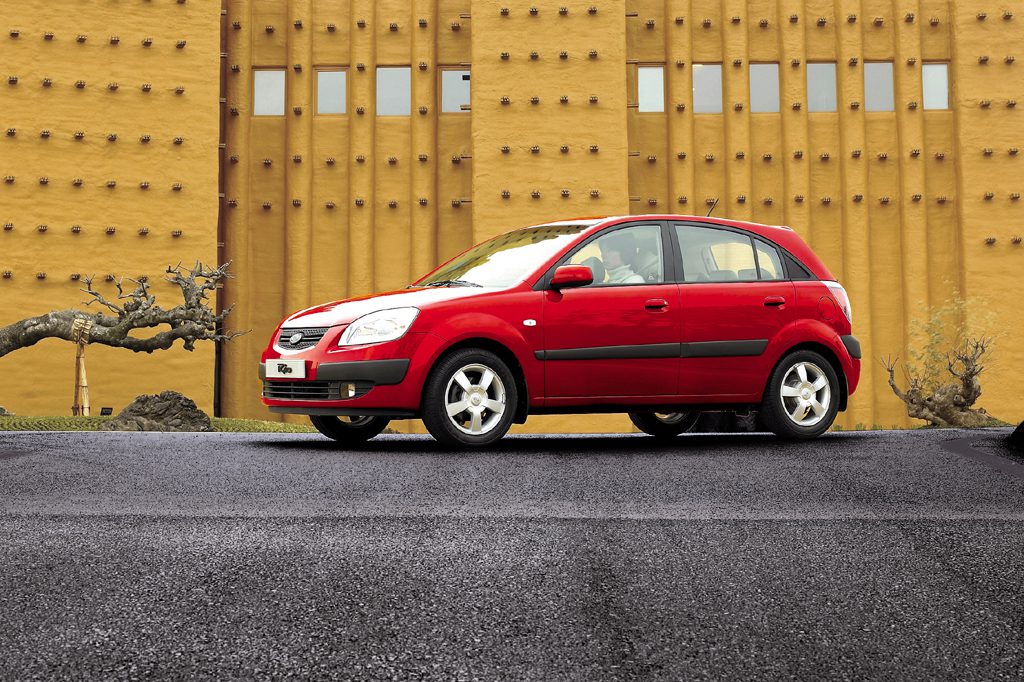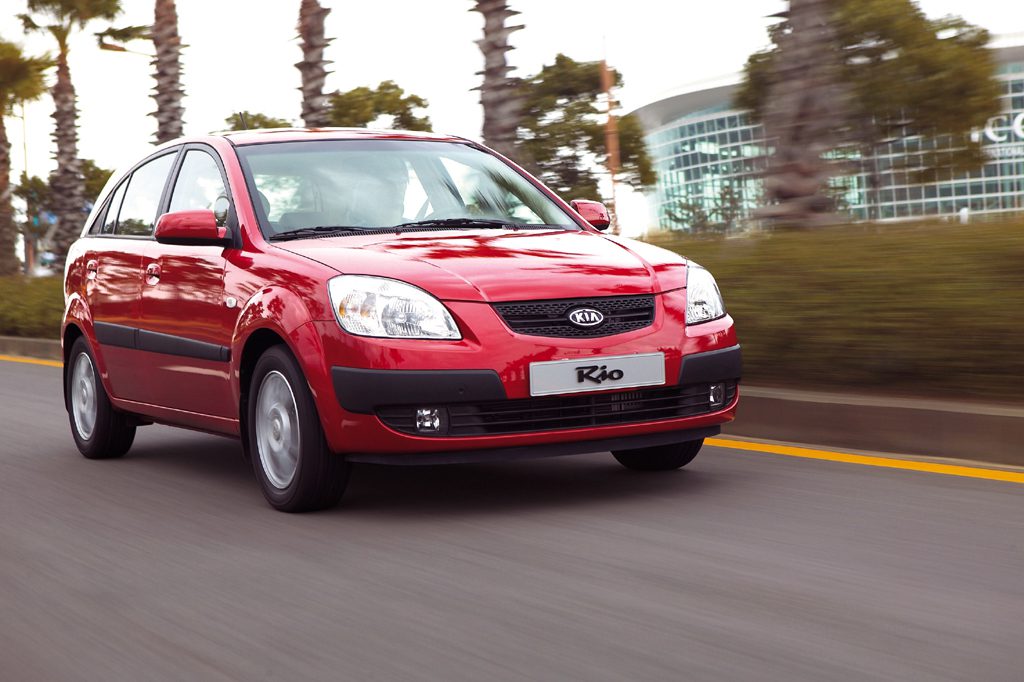| Compact car; Built in South Korea |
|
|
| Good condition price range: $3,500 – $13,000* |

2006 Kia Rio

2006 Kia Rio

2006 Kia Rio

2006 Kia Rio
| Pros: |
|
| Cons: |
|
Best suited for undemanding, low-speed running, the smallest Kias include plenty of features for their low-budget price. In addition, Rio a surprisingly well-built car that, with Kia’s strong new-car warranty, delivers a lot for the money-most notably, standard side-impact and curtain airbags. The base sedan offered no options, so if you want air conditioning or an automatic transmission, look for an LX or SX model. Rios do not hold their value well, depreciating a bit faster than Hyundai’s Accent, so prices on the used-car market tend to be relatively low.
Overview
Kia redesigned and enlarged its entry-level compact line for 2006, giving it more room, more power, and more safety features. Rio continued in front-wheel-drive sedan and hatchback form; the hatchback was called Rio5. Both body styles gained 3.5 inches in wheelbase, and 1.6 inches of rear legroom.
Track width (distance between wheels) also grew. In fact, Kia claimed the 2006 Rio was bigger in every dimension, except for overall length. Trunk space in the sedan increased by 30 percent. Unlike the prior generation, Kia sought to differentiate its Rio from the closely-related Hyundai Accent.
Billed as “sporty and youthful,” Rio styling was said to be European-influenced. Kia’s 1.6-liter four-cylinder engine gained 6 horsepower, now rated at 110. A five-speed manual transmission was standard, with four-speed automatic optional. Kia claimed a 20-percent increase in fuel economy and range.
Sedans came in base and LX trim, with 14-inch wheels; the Rio5 hatchback only in SX guise with 15-inch alloys. Newly standard were side airbags and head-protecting curtain side airbags. Antilock four-wheel disc brakes were optional on all but the base sedan. LX sedans added air conditioning, a CD player, split folding rear seat, and a tilt steering wheel. The Rio5 SX included foglamps, a rear spoiler and wiper/washer, and a leather-wrapped steering wheel. An optional Power Package included power windows, locks, and mirrors.
Kia is owned by Hyundai, and both South Korean automakers offered warranty coverage of 5-year/60,000-mile basic, plus 10-year/100,000-mile powertrain, and 5-year/60,000-mile roadside assistance. In addition to Hyundai’s Accent, the Rio competed against such subcompacts as the Chevrolet Aveo/Cobalt, Honda Fit/Civic, and Toyota Corolla/Yaris.
Yearly Updates
| 2007 Rio Minor interior trim changes marked the 2007 model year for Kia’s smallest car. A new SX sedan joined the lineup, with 15-inch alloy wheels, foglamps, a rear spoiler, and leather-wrapped steering wheel. SX models could now get 16-inch alloy wheels. |
| 2008 Rio The 2008 Kia Rio and Rio5 were largely unchanged, but the Rio5 became available in LX trim. |
| 2009 Rio A digital audio player input jack was newly standard, as was satellite radio. |
| 2010 Rio The 2010 Kia Rio received slightly freshened styling. |
| 2011 Rio The 2011 Kia Rio sees few changes, though a 4-speed automatic becomes standard on LX and SX versions of the sedan and Rio5, meaning only the Base sedan is available with a manual transmission. |
